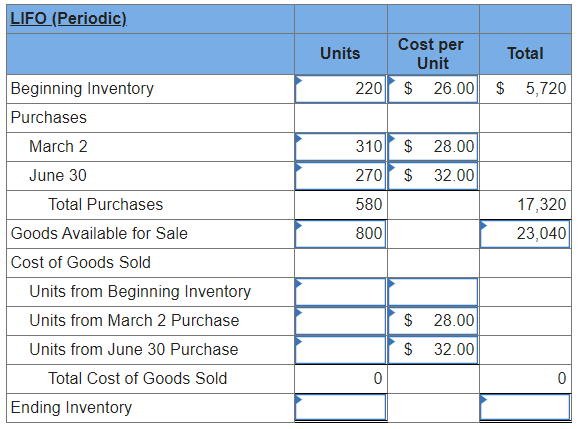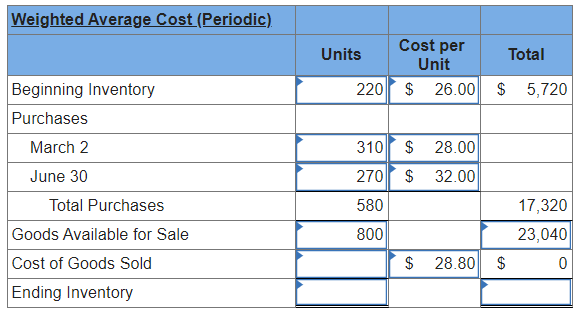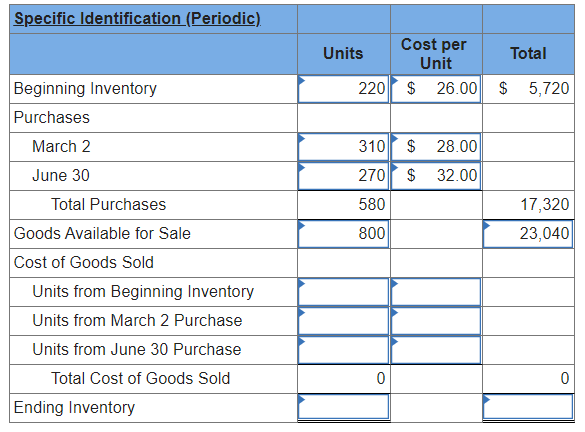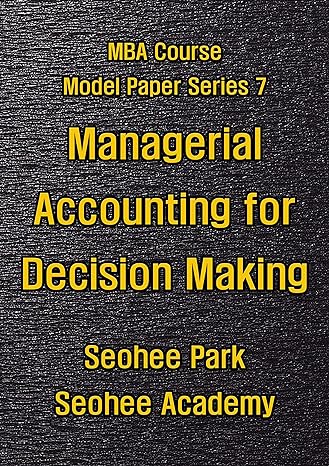




Scrappers Supplies tracks the number of units purchased and sold throughout each accounting period but applies its inventory costing method at the end of each period, as if it uses a periodic inventory system. Assume its accounting records provided the following information at the end of the annual accounting period, December 31. Units 220 Unit Cost $26 Transactions Beginning inventory, January 1 Transactions during the year: a. Purchase on account, March 2 b. Cash sale, April 1 ($42 each) c. Purchase on account, June 30 d. Cash sale, August 1 ($42 each) 28 310 (370) 270 32 (90) TIP: Although the purchases and sales are listed in chronological order, Scrappers determines the cost of goods sold after all of the purchases have occurred. Required: 1. Compute the cost of goods available for sale, cost of ending inventory, and cost of goods sold at December 31 under each of the following inventory costing methods: (Round "Cost per Unit" to 2 decimal places.) a. Last-in, first-out. b. Weighted average cost. c. First-in, first-out. d. Specific identification, assuming that the April 1 sale was selected one-fifth from the beginning inventory and four-fifths from the purchase of March 2. Assume that the sale of August 1 was selected from the purchase of June 30. 2. Of the four methods, which will result in the highest gross profit? Which will result in the lowest income taxes? LIFO (Periodic) Units Cost per Total Unit $ 26.00 $ 5,720 220 310 $ 28.00 270 $ 32.00 580 17,320 23,040 800 Beginning Inventory Purchases March 2 June 30 Total Purchases Goods Available for Sale Cost of Goods Sold Units from Beginning Inventory Units from March 2 Purchase Units from June 30 Purchase Total Cost of Goods Sold Ending Inventory $ $ $ 28.00 32.00 0 0 Weighted Average Cost (Periodic) Units Total Cost per Unit $ 26.00 220 $ 5,720 310 $ 28.00 270 $ 32.00 Beginning Inventory Purchases March 2 June 30 Total Purchases Goods Available for Sale Cost of Goods Sold Ending Inventory 580 17,320 23,040 800 $ 28.80 $ 0 FIFO (Periodic) Units Total Cost per Unit $ 26.00 220 $ 5,720 310 $ 28.00 270 $ 32.00 580 17,320 23,040 800 Beginning Inventory Purchases March 2 June 30 Total Purchases Goods Available for Sale Cost of Goods Sold Units from Beginning Inventory Units from March 2 Purchase Units from June 30 Purchase Total Cost of Goods Sold Ending Inventory 220 $ 26.00 $ 28.00 0 220 5,720 Specific Identification (Periodic). Units Total Cost per Unit $ 26.00 220 $ 5,720 310 $ 28.00 270 $ 32.00 580 17,320 23,040 800 Beginning Inventory Purchases March 2 June 30 Total Purchases Goods Available for Sale Cost of Goods Sold Units from Beginning Inventory Units from March 2 Purchase Units from June 30 Purchase Total Cost of Goods Sold Ending Inventory 0 0











